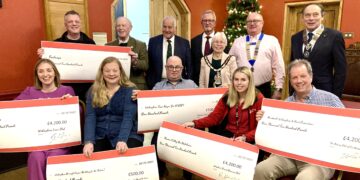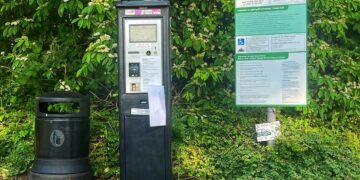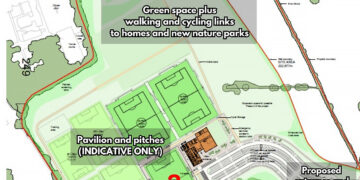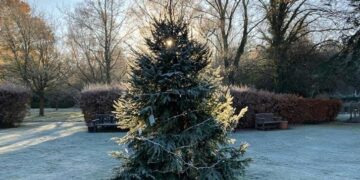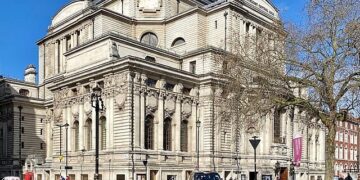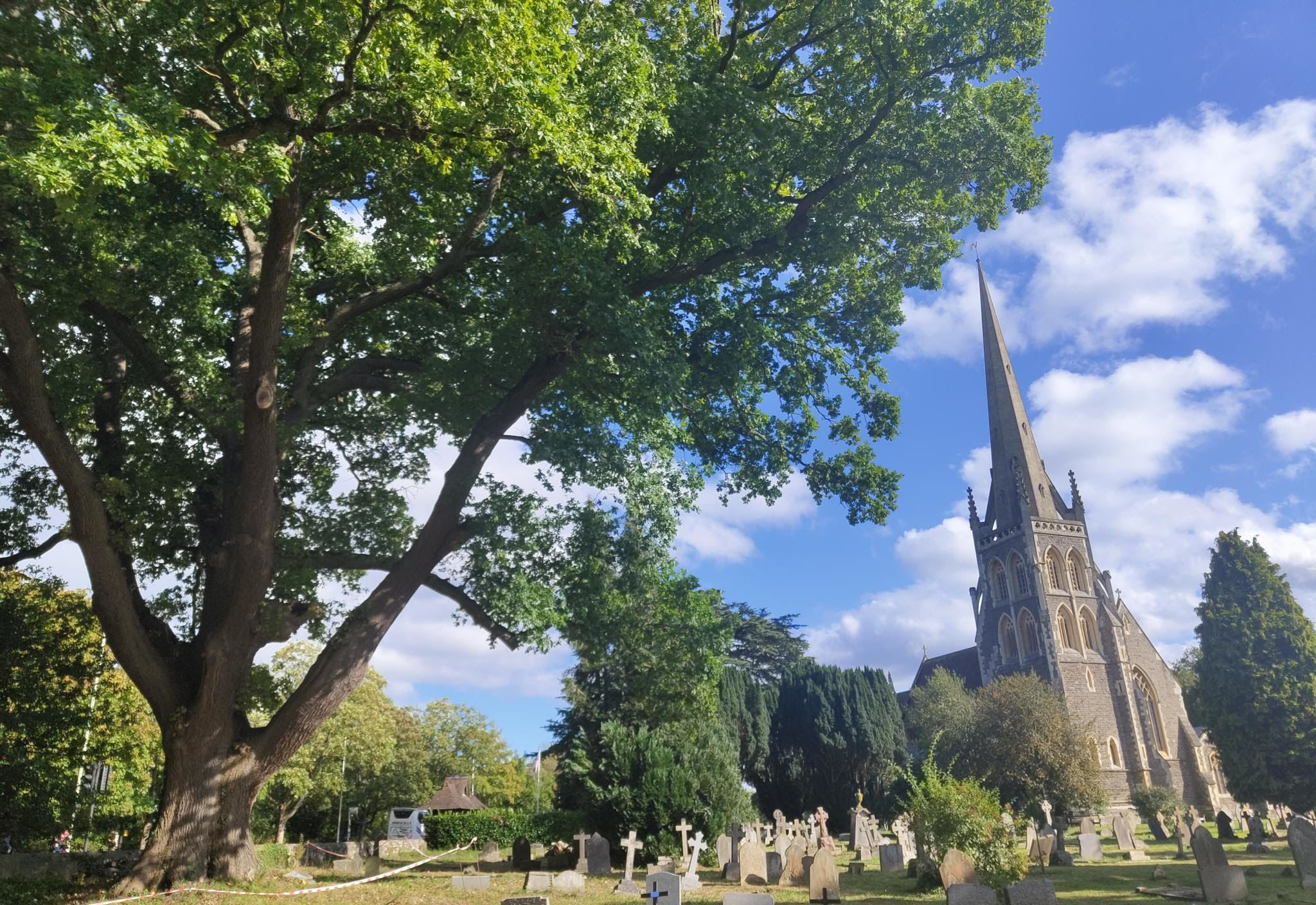THE FATE of a Georgian tree that recently dropped a large branch into a Wokingham churchyard has been in the balance for the past month.
With an arboriculturalist’s assessment commissioned by St Paul’s Church Parish Council now been complete, it is clear that the English oak cannot remain as it is.
Either its crown must be severely lopped with only the central trunk remaining, or the tree must be felled.
The 300 year old oak stands just inside the churchyard beside Reading Road, where it overhangs the carriageway and is an imposing feature of the area.
On August 19, one of its boughs gave way, landing between graves underneath its canopy.

Fortunately neither person nor property was damaged, but the situation could have been very serious had the bough fallen onto the road or pavement alongside the churchyard.
The church immediately commissioned an in depth study to establish the condition of the tree and the likelihood of further breakages.
Although it may appear healthy to passers by, extensive fungal damage has been detected, and the tree’s bark hides rotten cavities within.
Weakened, and hollow in places, it is deemed unsafe.
Rector of St Paul’s Church, Reverend Canon Richard Lamey, said: “The report makes sad reading, but it is absolutely clear that we must act.
“We had decided beforehand to follow the recommendations, especially since the branch which came down last month was so heavy and so close to people in the churchyard.
“We were very fortunate that it missed everyone, as well as every gravestone, when it came down without warning on a Saturday morning.”
The report describes three possible outcomes for the tree; removing public access, extensive pruning of the crown, and felling.
Sometimes, valued ageing trees can be safely left in place if the public can be kept well away from danger.
Given the proximity of this tree to pedestrians, parishioners and vehicles, that option is not possible.
Pruning it to make it safe would require very considerable loss of boughs and greenery, and the report says this might actually increase fungal attack and speed of decay.
Felling is perhaps the only viable option.

“We are not choosing to do this,” said Mr Lamey.
“We understand that the community will be very shocked if the tree is taken down, but we must ensure people’s safety.
“If the report had said that it would be stable for another ten years, we would have followed that advice.
“But it’s very clear that it is not the case, and we cannot allow a branch to fall on the Reading Road.
“That would be catastrophic.
“I’ve lived beside the oak for nearly 10 years, and seen it every day.
“I love it, and I’ll miss it, but we can’t risk people’s safety.”
The parish council is exploring whether the stump may be retained as a wildlife habitat, but the whole root system of the tree may be compromised, which could make leaving even this remaining portion of the oak unsafe.
Should it have to be felled, the church will replace it with another English oak.
St Paul’s has been diligent in its care of the tree, commissioning surveys every five years.
Some decay has been previously noted, but nothing serious, even in the oak’s most recent 2017 examination.
It is recommended that work should be carried out within three months of the report.
It will cost the church around £10,000.
“We have no insurance for this,” said Mr Lamey.
“The oak is covered for any damage it might do to a car or a grave, but the tree itself is not insured, so this is a very large unexpected cost for us.
Chair of Wokingham District Veteran Trees Association (WDVTA) Alison Griffin said: “People become very emotionally attached to trees.
“They seem never to change, and we imagine that they will always be there.
“It’s actually not unusual for a large tree like this to develop cavities, and a certain amount of fungal infection is a normal part of the ageing process.
“In the past many English oaks like this one, were either coppiced – cut to ground level to encourage new growth, or pollarded – reduced to animal grazing height.”
Ms Griffin says that trees can alter considerably during their life-time, and that even if left with nothing but a large large trunk, can sometimes grow new branches and go on to have a second lease of life.
“If that isn’t possible in this case, the church may like to think about leaving a shortened stump to be carved into something to remember it by, like a piece of art, or a seat,” she said.
“This is what happened around ten years ago to a tree in the grounds of Hawthorns Primary School, in Woosehill, which became a story-telling chair for the children.”
Whatever St Paul’s Church does will be costly, and they will be grateful for any donations to help pay for the work.
For information, and to contribute, people should visit the church website and click on the giving button, at: www.spauls.co.uk
For more about WDVTA, visit: www.wdvta.org.uk




